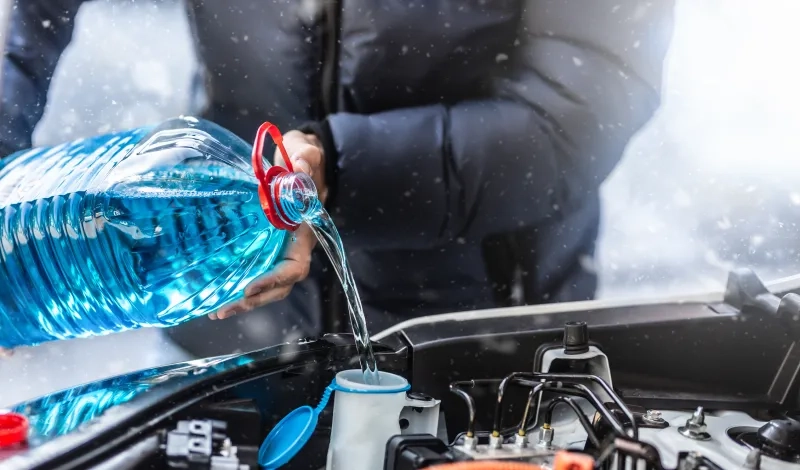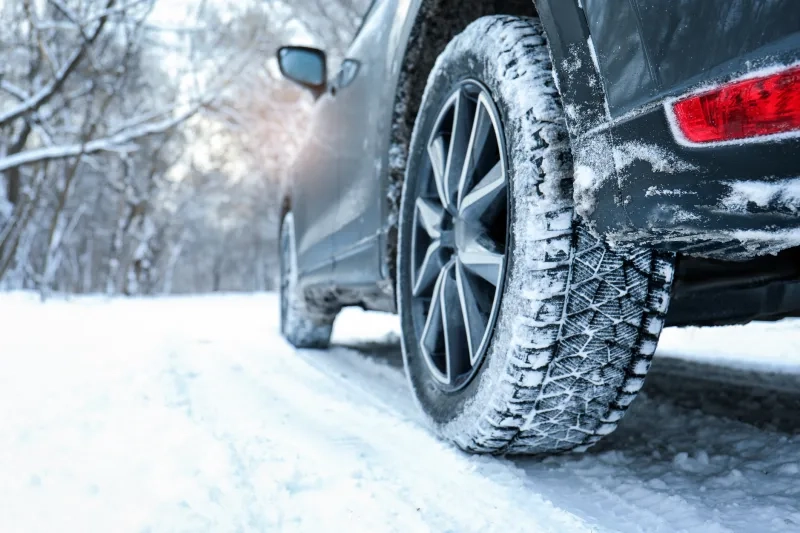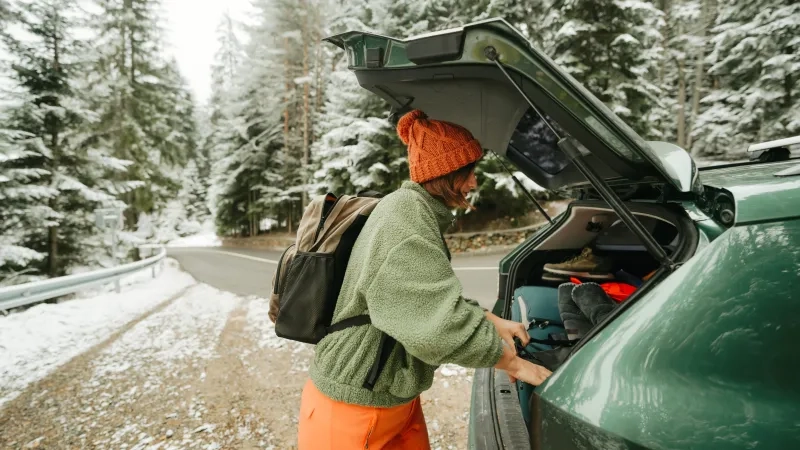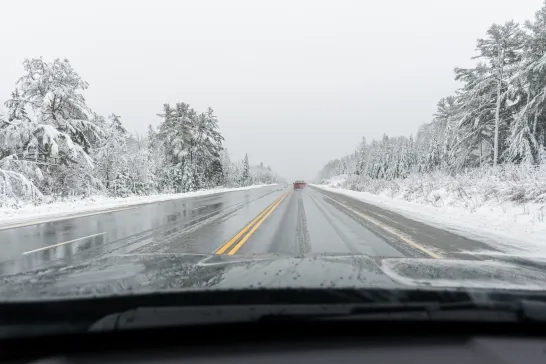
How should you prepare your car for winter? An expert weighs in
4 Minute Read
Whether it’s swirling flurries reducing visibility, a thick layer of snow obscuring road lines or black ice lurking beneath a coating of frost, winter driving in Ontario brings unique challenges. With harsh cold weather and tricky conditions, preparation is crucial to staying safe.
It's essential to winterize your vehicle so you're ready for whatever the season brings—that’s why Alexander Sala of CAA North & East Ontario’s Automotive Services weighs in with top recommendations. Not sure where to start? Here's expert advice to help you get ready for winter conditions.
What general maintenance should I do before winter?
Winter can be harsh on your vehicle, so don't wait until the first snowfall to address those regular maintenance needs. Check your heating and cooling system, air filters, wires, cables, belts and hoses in case they need to be replaced. A well-maintained car is your best ally for safe winter driving.
Visibility is critical during winter, so ensure your windshield wipers are in good shape. Replace them, if necessary, as worn wipers can leave streaks or fail to clear snow and ice effectively.
Additionally, check all your vehicle lights—headlights, taillights and turn signals—to ensure they function correctly. A clear view of the road ahead can make all the difference, especially when driving in poor conditions.
Have a mechanic inspect your brake pads and rotors for wear and tear and replace them if needed. Strong brakes are essential for avoiding accidents in icy conditions, making this an important step in your winter car maintenance routine.
Why should I test my car battery?

“Summer is what kills the battery, but you won’t find out until winter when it can’t start a car,” Sala advises. A dead battery can ruin your day, especially in winter. Before the cold hits, test your battery to ensure it is fully charged—look for a reading of at least 12.6 volts.
If it's struggling, it might be time for a replacement to avoid those frustrating morning start-up issues.
CAA's Mobile Battery Service will come to your location to test, replace and recycle your battery on the spot. CAA Members also save up to $25 when purchasing a CAA Premium Car Battery.
What fluids does my vehicle need when it’s cold?

“You want to check the fluid levels, especially the coolant in your vehicle. Make sure your antifreeze as well is topped up,” says Sala. He adds that filling your wiper fluid is vital, because “if you run out of windshield washer fluid on a salty road, you’re in big trouble. You're not going to be driving very far.”
It’s also a good idea to change your oil before winter to prevent engine issues. Once the cold weather hits, refill your gas tank as soon as it reaches the halfway mark. Monitoring fluid levels is essential to prevent freezing, maintain visibility and ensure engine performance when temperatures drop.
Do I really need winter tires?

Switching to winter tires is a must. As Sala explains, “winter tires have a different chemistry than summer and all-season tires. They stay a little bit softer in very cold weather.”
All-season tires struggle to maintain traction when temperatures dip below 7°C, while winter tires have “really aggressive grooves that will get you better stopping and better performance in terms of accelerating and cornering,” according to Sala.
You’ll also want to make sure your tires are properly inflated. Cold weather causes tire pressure to drop, reducing traction and increasing wear. Check your tire pressure regularly and ensure it is at the recommended level to maintain optimal performance on icy roads.
Studded tires, only legal for highway driving in Northern Ontario, can also make a huge difference. “Just like if you're wearing ice cleats over your boots, you’re going to notice that extreme grip,” Sala says.
Is it worth cleaning my car in the winter?
Don't let winter weather take a toll on your vehicle's appearance. Before the roads get salty, give your car a thorough wash, and consider applying a coat of wax for extra protection.
It’s a good idea to clean your car regularly throughout the snowy season. Although this might feel like an uphill battle, grime can cause rust and corrosion, resulting in long-term damage come spring. Don't forget the undercarriage and wheel wells, as salt will inevitably build up in those areas.
A clean car not only looks good—it also stands up better to winter's harsh conditions.
Should I keep an emergency kit in my trunk?

“It’s always great to have an emergency kit in your vehicle,” according to Sala. Winter travel can be especially unpredictable, so this safeguard is a wise precaution in case you get stranded. Sala, as well as the Government of Canada, recommend some essentials for your winter emergency kit.
First, you’ll want tools to get you out of a sticky situation. Pack a compact shovel, snow brush and ice scraper, wind-up flashlight, windshield wiper fluid, cat litter (or salt/sand) for traction, jumper cables and a tow rope to get you up and running quickly so that minor inconveniences don’t become major problems.
Extra gear like a warm blanket, winter gloves, hat and boots are also good to have on hand—if you get stuck or are in an accident, you could be waiting a little while for help. A phone charger, durable plastic water bottles and non-perishable snacks like energy bars are helpful, too. `
Although no one wants to imagine themselves in a serious emergency, preparing for the worst is best. Your kit should also include a candle with matches, a whistle for signalling, fire extinguishers, warning flares, and a first-aid kit with a seatbelt cutter.




